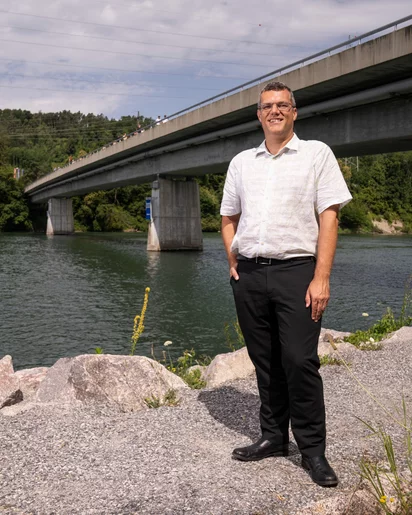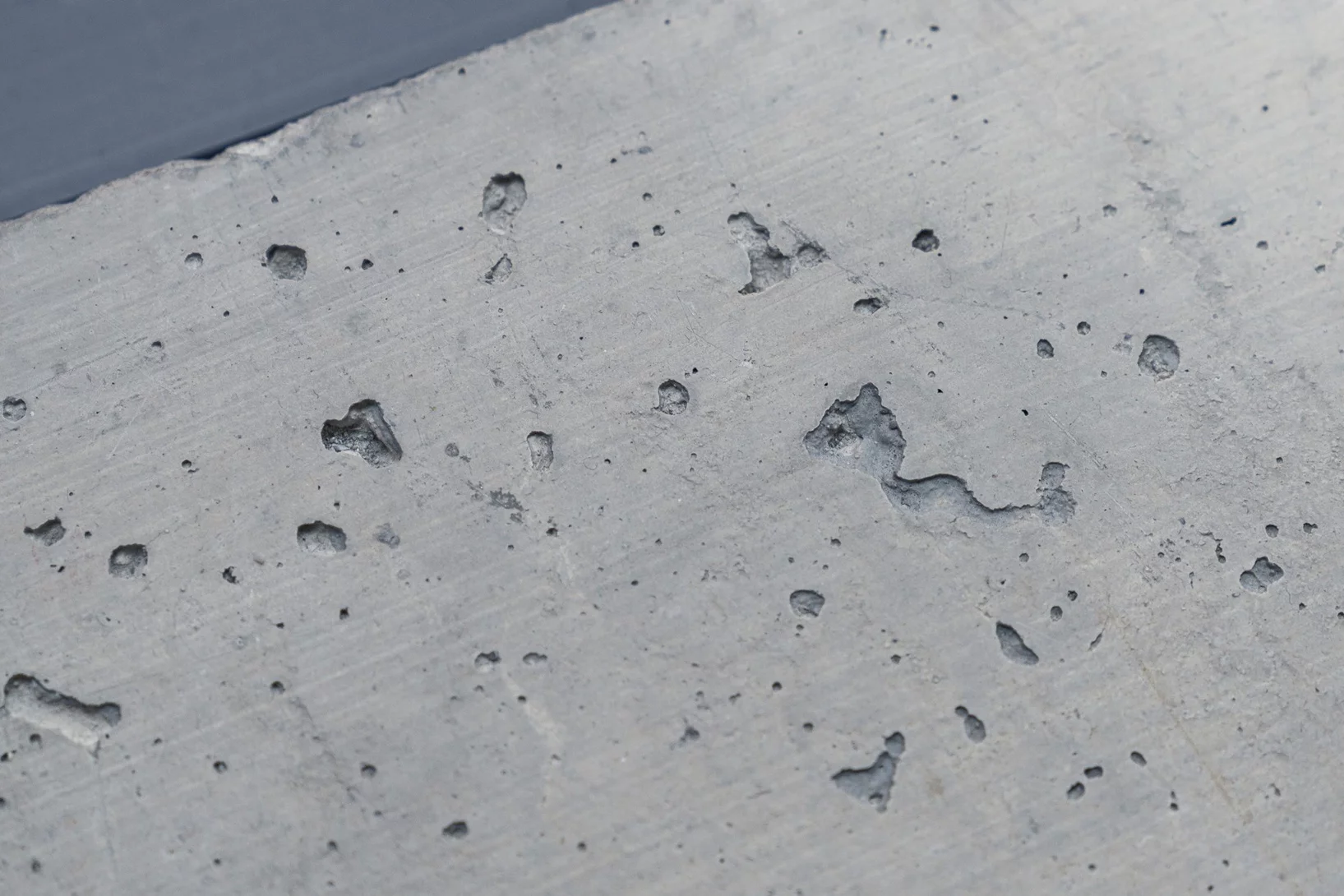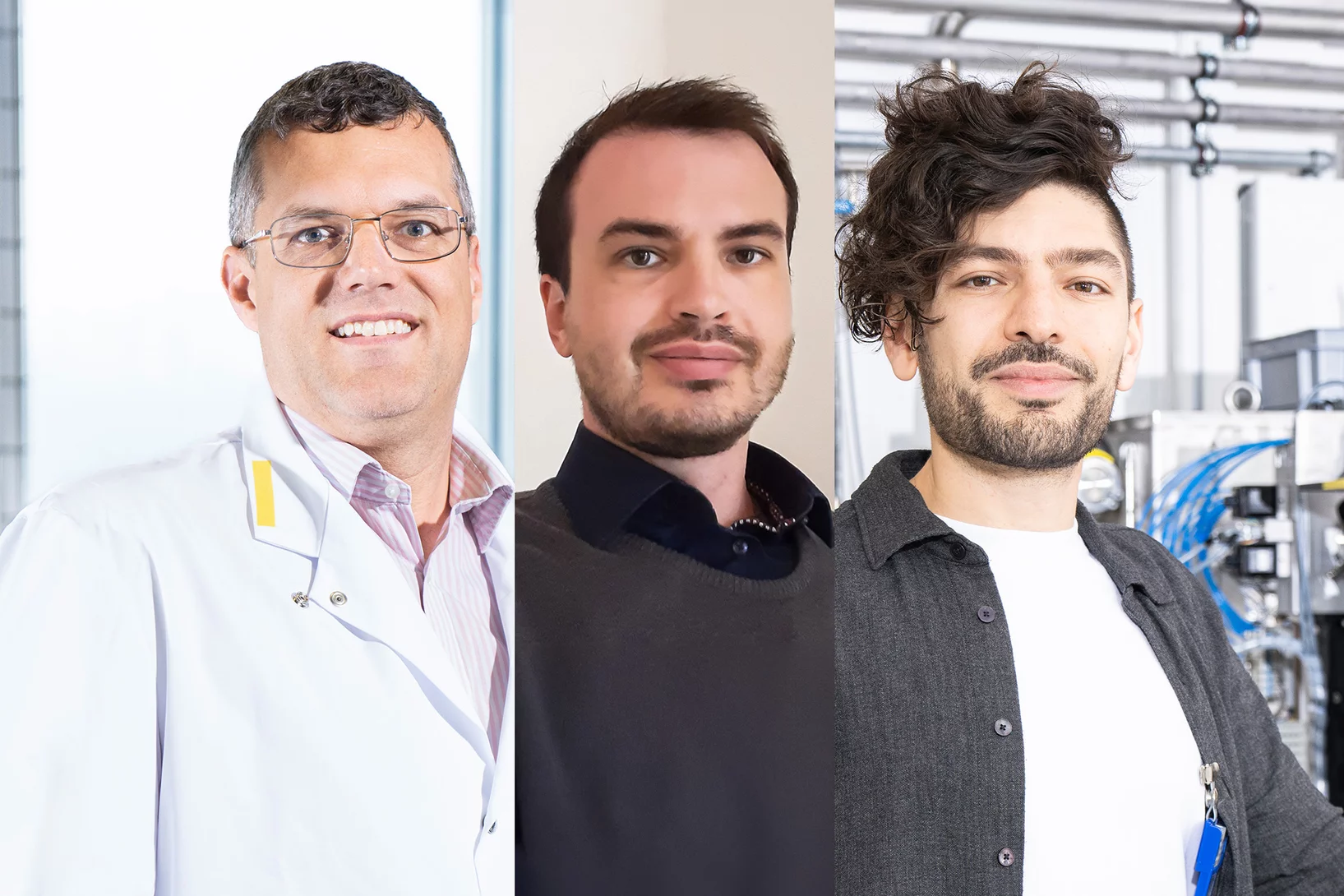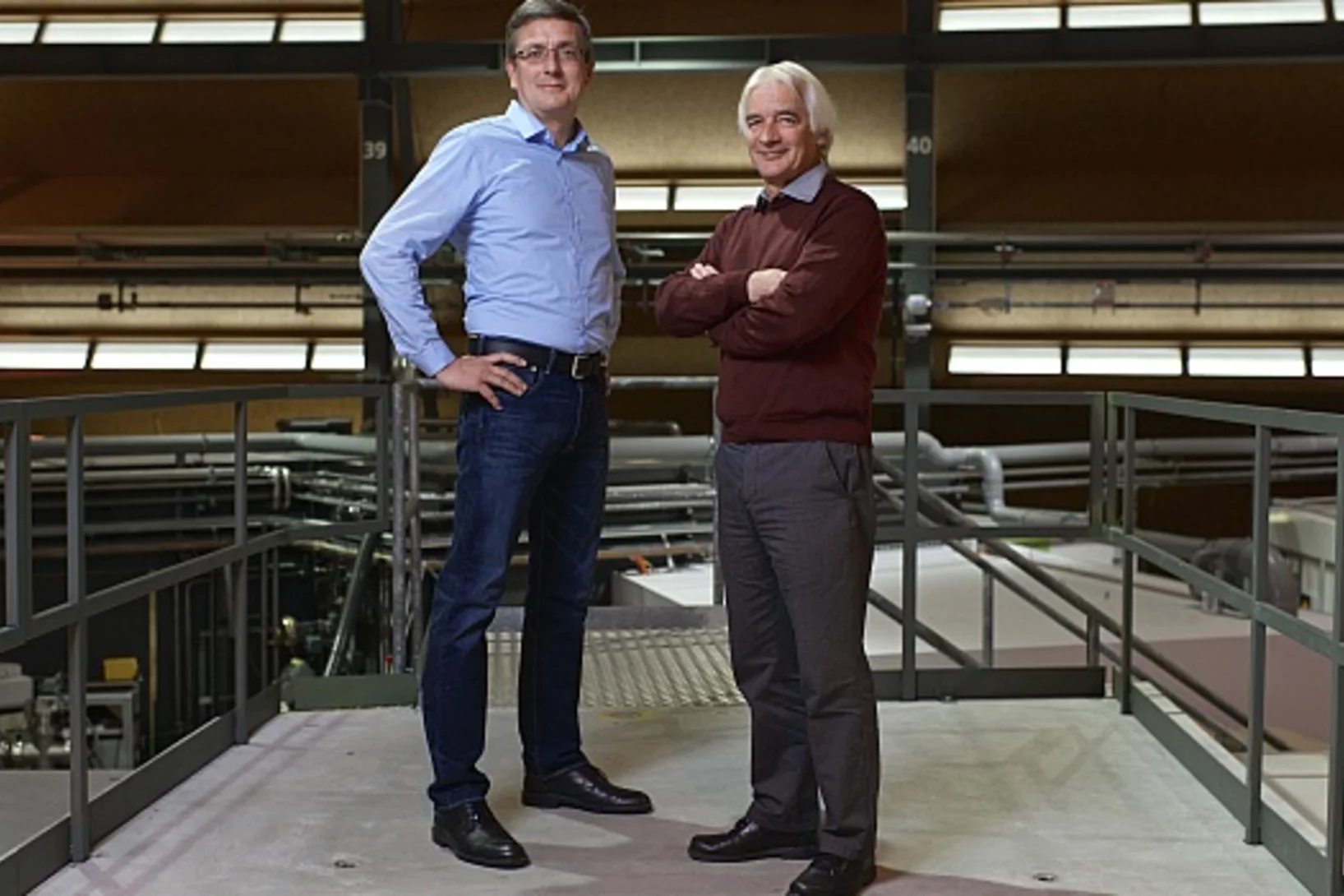“Watching concrete set is a lot more exciting than you might think”
Grey, hard, boring – for most people, these three words adequately describe concrete as a material. John Provis has a different view. This scientist at the Paul Scherrer Institute PSI has devoted his research career to this ubiquitous and economically important building material. He hopes to unlock the secrets of concrete.

Concrete, used in many Swiss bridges, is the speciality of materials researcher John Provis. At the Paul Scherrer Institute PSI, he is studying this widely used building material with the aim of improving it and making it more sustainable. © Paul Scherrer Institute PSI/Mahir Dzambegovic
According to Provis, Switzerland is the ideal place for a researcher studying concrete. He grew up in Melbourne, Australia, and has been working at the Paul Scherrer Institute PSI since 2023. “Switzerland is not only an international leader in cement research. It is also renowned for using a lot of high-quality concrete. You can see that when you look at the buildings around here.”
At PSI, John Provis studies the building material on many different scales. “One week, I might be examining a tiny ten-micrometre sample of concrete, and the next I might be looking at a concrete block that is three by three metres in size,” he explains. He then assembles the pieces of the jigsaw puzzle, his research findings, to gain a better understanding of the material from the ground up.
Interplay at boundary layers
“I literally watch concrete set,” jokes John Provis. The 45-year-old researcher relishes the irony of how boring that sounds. Because to him, it is really exciting.
Concrete is made by mixing cement powders and aggregates – such as sand, gravel or chippings – with water and additives, such as mineral powders, ashes and special polymers. As it hardens, it forms the stone-like material that the construction industry values so highly. Some sixteen million cubic metres of concrete are used in Switzerland every year, making it the country’s most widely utilised building material by volume.
John Provis is particularly interested in how the water and the individual grains of cement, rock and other mineral powders interact with each other. The components differ greatly in size, and for the main part their complex interaction is still poorly understood. Provis recently received a prestigious Advanced Grant from the Swiss National Science Foundation (SNSF) worth 2.14 million Swiss francs over five years to conduct research into this.
Microscopy, X-ray techniques, spectroscopy, neutron and synchrotron radiation – Provis uses many different techniques to look inside concrete. This makes PSI, with its wide range of large research facilities, the ideal place for him.
“Big things with chemistry”
The shelves in John Provis’s office are stacked with countless books and trade journals about concrete and cement. Between these, he keeps particularly interesting examples of these materials in the shape of cubes and hand-sized blocks.
John Provis studied chemical engineering; it was only by chance that he ended up in concrete and cement research: “I always wanted to achieve big things with chemistry,” he says. Originally, he thought this could best be accomplished in the petrochemical industry. However, looking for a position as a research assistant in Melbourne during his semester break, he wound up in a group that was conducting research into using cement as a barrier against environmentally harmful substances. He then devoted his doctoral thesis to cement research and so became part of an industry that is one of the largest in the world. Here he can indeed achieve “big things with chemistry”.
From Australia to Europe
In 2012, after completing his doctorate and post-doc, John Provis left Down Under and moved to England with his wife – now also a professor of sustainable building materials. As a professor at the University of Sheffield, he worked on sustainable concrete, among other things. Because cement production is one of the world’s biggest emitters of greenhouse gases. “Anything we can do to reduce the amount of cement in concrete is a good thing.”
He has always enjoyed taking his students on informal tours around cities and university campuses showing them the various ways in which concrete can fail. “For example: Take this piece of steel here, which is poking out because the concrete wasn’t thick enough, and now the steel is rusting. Or: Here the surface of the concrete has begun to crumble, presumably due to freezing water.”
Arriving in Switzerland
John Provis loves the fact that he is studying such a complex and yet everyday material. “Concrete is basically a high-performance material, but most people who work with it are not highly specialised concrete engineers,” he says. “Many people mix their own concrete with a wheelbarrow, shovel and garden hose, for example to set a fence post in their garden.” And it usually works quite well. “Concrete is extremely forgiving. Even if you mix it wrong, you still get something that behaves pretty well.”
John Provis has been doing research at PSI in Villigen for almost two years now. Cement, he explains, is not just an ingredient of concrete – it is also used to safely contain and store radioactive waste. This is why his team is based at the Laboratory for Waste Management at PSI’s Center for Nuclear Engineering and Sciences.
Provis feels at home in Switzerland. As he describes a commonplace horse trough in his home town of Würenlos dating back to the 1740s, he notes with a sense of awe: “That’s before the first European colonists arrived in Australia!” He also enjoys exploring Switzerland’s neighbouring countries: “Europe has so much cultural wealth, along with history, traditions and linguistic diversity. I really enjoy being part of this and learning about it.”
Switzerland is not a place where he can show his students graphic examples of poor-quality concrete, but Provis is happy to accept that.
- The Romans were among the first builders in history to use concrete. To this day, the dome of the Pantheon in Rome remains the largest concrete structure of its kind ever to be built without steel reinforcement. Around 30 BC, Marcus Vitruvius Pollio, known as Vitruvius, wrote his “Ten Books on Architecture”, in which he describes the concrete formulations used in the Roman Empire.
- Manufacturing cement is harmful to the climate. Switzerland’s six cement plants are responsible for around five per cent of the nation’s greenhouse gas emissions. To make cement, limestone is heated to around 1400 degrees Celsius, releasing carbon dioxide in the process. This reaction also consumes large amounts of energy.
- When mixing concrete, adding more water makes it easier to stir. However, if too much water is used, there is a risk that the cement paste and coarser aggregates will segregate before the concrete sets. Larger aggregates may sink to the bottom, for example, creating gravel pockets and hence resulting in low-quality concrete.
- When concrete is poured, formwork made of wood or steel is often used. The finished concrete therefore bears the imprint of the moulds – for example, the grain of the wooden formwork may be visible in the concrete.
- Unlike asphalt, concrete hardens more quickly in warm conditions. This can cause problems if a concrete mixer truck carrying liquid concrete gets stuck in traffic in hot weather. In this situation, a bag of sugar can help. When poured into the liquid concrete, the sugar poisons the chemical reaction, preventing the concrete from setting. The concrete will have to be discarded afterwards, but at least the mixer truck will be saved.
Contact
Dr John Provis
PSI Center for Nuclear Engineering and Sciences
Paul Scherrer Institute PSI
+41 56 310 41 35
john.provis@psi.ch
[English]



